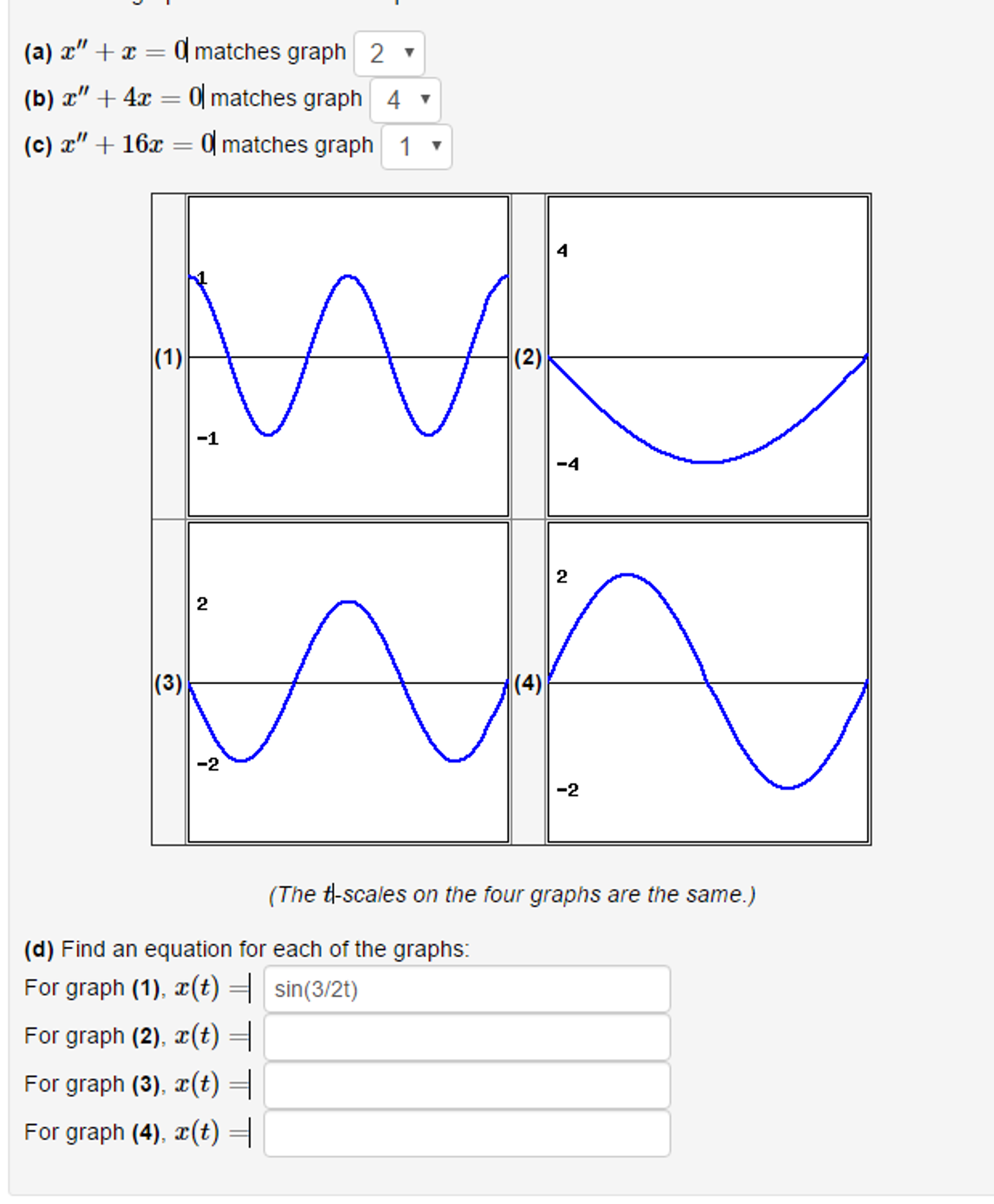Ever wondered what happens when you plot "x is equal to 4x graph x"? It’s like opening a treasure chest of mathematical intrigue. Imagine a graph that seems to stretch, twist, and dance across the Cartesian plane. This equation is not just numbers on paper; it’s a story waiting to unfold. Whether you’re a math wizard or someone who’s simply curious, this journey through "x is equal to 4x graph x" will blow your mind. So buckle up, because we’re diving deep into the heart of algebra and graphing!
This concept might sound intimidating at first, but don’t worry. Think of it as solving a puzzle where every piece fits perfectly. The equation "x = 4x" might seem basic, but when you throw graphing into the mix, things get interesting. It’s like turning a simple math problem into an artistic masterpiece. Stick around, and we’ll break it down step by step, making sure you understand every twist and turn.
Before we dive deeper, let’s set the stage. This article isn’t just about numbers and graphs; it’s about uncovering the beauty of mathematics. By the end, you’ll not only grasp "x is equal to 4x graph x" but also see how it connects to real-world applications. Ready? Let’s go!
What Does "X is Equal to 4X" Actually Mean?
At its core, "x is equal to 4x" is a simple algebraic equation. But hold up—what does it really mean? Think of it this way: you’re comparing two versions of the same variable. On one side, you have plain old "x," and on the other, you’ve got "4x," which is just "x" multiplied by four. This equation is like asking, "When does a number equal itself times four?" Spoiler alert: it doesn’t happen often. In fact, the only time this equation holds true is when x equals zero. Crazy, right?
Now, let’s throw graphing into the mix. When you plot "x = 4x" on a graph, you’re essentially mapping out where these two expressions meet. Spoiler alert again: they only meet at the origin, the point (0, 0). But wait, there’s more! This equation isn’t just about finding a single point. It’s about understanding the relationship between variables and how they interact on a graph. Stick with me here—it’s about to get fascinating.
Breaking Down the Graph of "X = 4X"
Alright, let’s talk about the graph itself. When you plot "x = 4x," you’re actually plotting two lines: y = x and y = 4x. The first line, y = x, is a straight diagonal line that cuts right through the origin. It’s like the backbone of the graph, representing all the points where the input equals the output. The second line, y = 4x, is steeper. It represents all the points where the output is four times the input. These two lines intersect at exactly one point: (0, 0).
- Https Vegamovies St
- Lisa Evers Children
- Bollyflix Com Anime
- Movierulz 2024 18
- Telugu Movierulz In 2024 Pages
But here’s the kicker: what happens when you zoom out? The line y = 4x stretches upward at a much faster rate than y = x. This difference in slope tells us a lot about how these two expressions behave. It’s like watching a race where one runner is way faster than the other. Cool, right?
Key Features of the Graph
Let’s zoom in on some key features of this graph:
- Intersection Point: The only point where y = x and y = 4x meet is (0, 0). This is the solution to the equation "x = 4x."
- Slope Comparison: The slope of y = x is 1, while the slope of y = 4x is 4. This means y = 4x grows much faster as you move away from the origin.
- Behavior at Large Values: As x gets really big or really small, the line y = 4x dominates. This shows how multiplication affects the relationship between variables.
Why Does "X = 4X" Matter?
So, why should you care about this equation? Well, it’s more than just a math problem. Understanding "x = 4x" helps you grasp fundamental concepts in algebra and graphing. It’s like learning the rules of the game before you start playing. This equation teaches you about:
- Equality and Equivalence: What does it mean for two expressions to be equal?
- Linear Relationships: How do variables interact on a graph?
- Scaling Factors: What happens when you multiply a variable by a constant?
These concepts aren’t just theoretical. They pop up in real-world scenarios, from finance to physics. For example, imagine calculating interest rates or analyzing population growth. The principles behind "x = 4x" are everywhere!
Exploring Real-World Applications
Let’s bring this equation to life with some real-world examples. Picture this: you’re managing a budget, and you want to compare two investment options. One option offers a return equal to your initial investment, while the other offers four times your investment. Sound familiar? This is exactly what "x = 4x" represents!
Or consider physics. When you study motion, you often deal with equations that involve scaling factors. For instance, if you double the force applied to an object, its acceleration increases proportionally. This is similar to how "x = 4x" works. The relationships between variables are key to understanding the world around us.
Case Study: Population Growth
Let’s dive into a specific example: population growth. Suppose a town’s population grows linearly over time. If the current population is x, and it quadruples every decade, you can model this with the equation "x = 4x." This helps predict future growth and plan resources accordingly. See how math connects to everyday life?
Common Misconceptions About "X = 4X"
There are a few myths floating around about this equation. Let’s debunk them:
- Myth #1: "X = 4X" has infinite solutions. Nope! It only has one solution: x = 0.
- Myth #2: The graph is complicated. Actually, it’s two straight lines that intersect at a single point.
- Myth #3: This equation is useless. Wrong! It’s a gateway to understanding deeper mathematical concepts.
Understanding these misconceptions helps you approach the equation with clarity and confidence.
Tips for Solving Similar Equations
Now that you’ve mastered "x = 4x," let’s talk about solving similar equations. Here are some tips:
- Identify the Variables: Clearly define what each variable represents.
- Look for Patterns: Analyze how the variables interact and grow.
- Graph It Out: Visualizing the equation can make it easier to solve.
These strategies will help you tackle any linear equation with ease. Practice makes perfect, so don’t be afraid to experiment!
Step-by-Step Guide
Here’s a quick guide to solving "x = 4x":
- Set up the equation: x = 4x.
- Subtract x from both sides: 0 = 3x.
- Solve for x: x = 0.
See? It’s that simple!
Advanced Concepts: Beyond "X = 4X"
Once you’ve mastered "x = 4x," you can explore more advanced topics. For instance, what happens when you introduce quadratic or exponential terms? How do scaling factors affect nonlinear equations? These questions open up a whole new world of mathematical exploration.
For example, consider the equation "x = 4x^2." This introduces a quadratic term, making the graph curve instead of remaining straight. The solutions to this equation are more complex, but the principles remain the same. It’s all about understanding relationships between variables.
Conclusion: The Power of "X is Equal to 4X Graph X"
We’ve journeyed through the fascinating world of "x is equal to 4x graph x," uncovering its secrets and applications. From understanding basic algebra to exploring real-world scenarios, this equation has a lot to teach us. Remember, math isn’t just about numbers—it’s about connections and patterns. By mastering "x = 4x," you’ve taken a big step toward understanding the beauty of mathematics.
So, what’s next? Why not try graphing some similar equations or exploring advanced concepts? And don’t forget to share this article with your friends! Who knows? You might inspire someone else to fall in love with math. Thanks for joining me on this journey—I hope you enjoyed it as much as I did!
Table of Contents
- What Does "X is Equal to 4X" Actually Mean?
- Breaking Down the Graph of "X = 4X"
- Why Does "X = 4X" Matter?
- Exploring Real-World Applications
- Common Misconceptions About "X = 4X"
- Tips for Solving Similar Equations
- Advanced Concepts: Beyond "X = 4X"
- Conclusion: The Power of "X is Equal to 4X Graph X"



Detail Author:
- Name : Gerhard Goyette
- Username : jbode
- Email : lenna39@hotmail.com
- Birthdate : 2004-01-16
- Address : 1391 Eliza Viaduct Hartmannton, WV 44112-2855
- Phone : +1 (253) 450-7646
- Company : Lind-Koepp
- Job : Social Scientists
- Bio : Odio doloremque explicabo consectetur distinctio sed possimus. Optio molestias natus enim non neque velit culpa et. Cumque qui nostrum occaecati aut et voluptatem.
Socials
linkedin:
- url : https://linkedin.com/in/chauncey_hegmann
- username : chauncey_hegmann
- bio : Vel totam quaerat fuga sed.
- followers : 4981
- following : 2517
twitter:
- url : https://twitter.com/chauncey.hegmann
- username : chauncey.hegmann
- bio : Ratione cupiditate accusamus qui voluptatum. Incidunt quibusdam voluptas et aspernatur. Vitae optio velit adipisci adipisci.
- followers : 2225
- following : 813
facebook:
- url : https://facebook.com/chauncey5193
- username : chauncey5193
- bio : Ad in earum delectus adipisci eius. Ipsam rem sit quaerat mollitia.
- followers : 2306
- following : 2665
instagram:
- url : https://instagram.com/hegmann1973
- username : hegmann1973
- bio : Eum ullam error ut excepturi hic. Fugit aut labore neque voluptate.
- followers : 4698
- following : 55
tiktok:
- url : https://tiktok.com/@chauncey2076
- username : chauncey2076
- bio : Magnam sunt tempore rerum explicabo ut.
- followers : 4896
- following : 1786